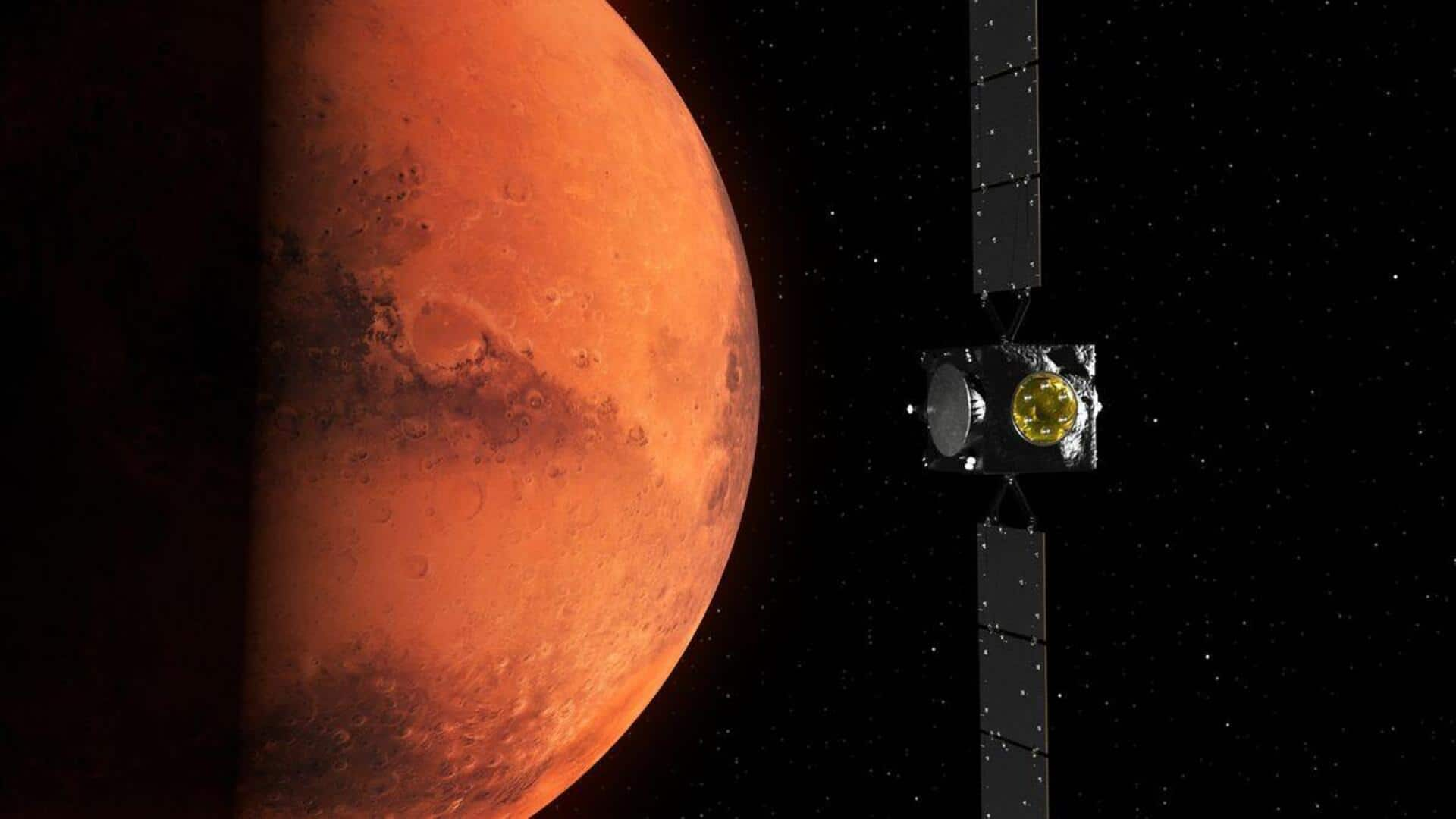
Europe's 'Hera' asteroid probe on track for Mars rendezvous
What's the story
The European Space Agency (ESA)'s Hera asteroid probe, has successfully completed a critical milestone in its mission to study the site of the first-ever asteroid deflection test. The spacecraft performed a 13-minute burn of its three orbital control thrusters earlier this month, following an initial 100-minute burn on October 23. These maneuvers have accelerated Hera by 166 meters per second, putting it on course to rendezvous with Mars in March 2025.
Mission details
Mission to visit Didymos binary asteroid system
The main goal of the Hera mission is to visit the Didymos binary asteroid system. NASA's Double Asteroid Redirect Mission (DART) crashed into Dimorphos, Didymos's smaller companion, in September 2022. Hera's job is to perform important follow-up investigations to assess the success of this asteroid deflection impact. The spacecraft will use Mars for a gravity assist on its way to its destination.
Trajectory adjustment
Fine-tuning trajectory for Mars flyby
Francesco Castellini from ESOC's Flight Dynamics team, said in an ESA release, "We are now analyzing Hera's new trajectory following the second burn." He confirmed the procedure appears to have gone very well. A minor correction maneuver of a few tens of centimeters is planned for November 21, to fine-tune the trajectory for the upcoming Mars flyby.
Additional research
Hera to conduct bonus experiments
The Mars flyby will also open the door for more science experiments. Hera's trajectory will take it close to Deimos, one of Mars's moons, where it will deploy its scientific instruments on the mysterious celestial body. This is an added benefit of the spacecraft's trajectory adjustment for its primary mission.
Mission timeline
Journey and expected arrival at Didymos
Hera was launched on October 7, aboard a SpaceX's Falcon 9 rocket from Cape Canaveral Space Force Station. The spacecraft is carrying two cubesats, named Milani and Juventas. It is expected to reach the Didymos system in late 2026, marking the culmination of its mission to investigate the first-ever asteroid deflection test site.